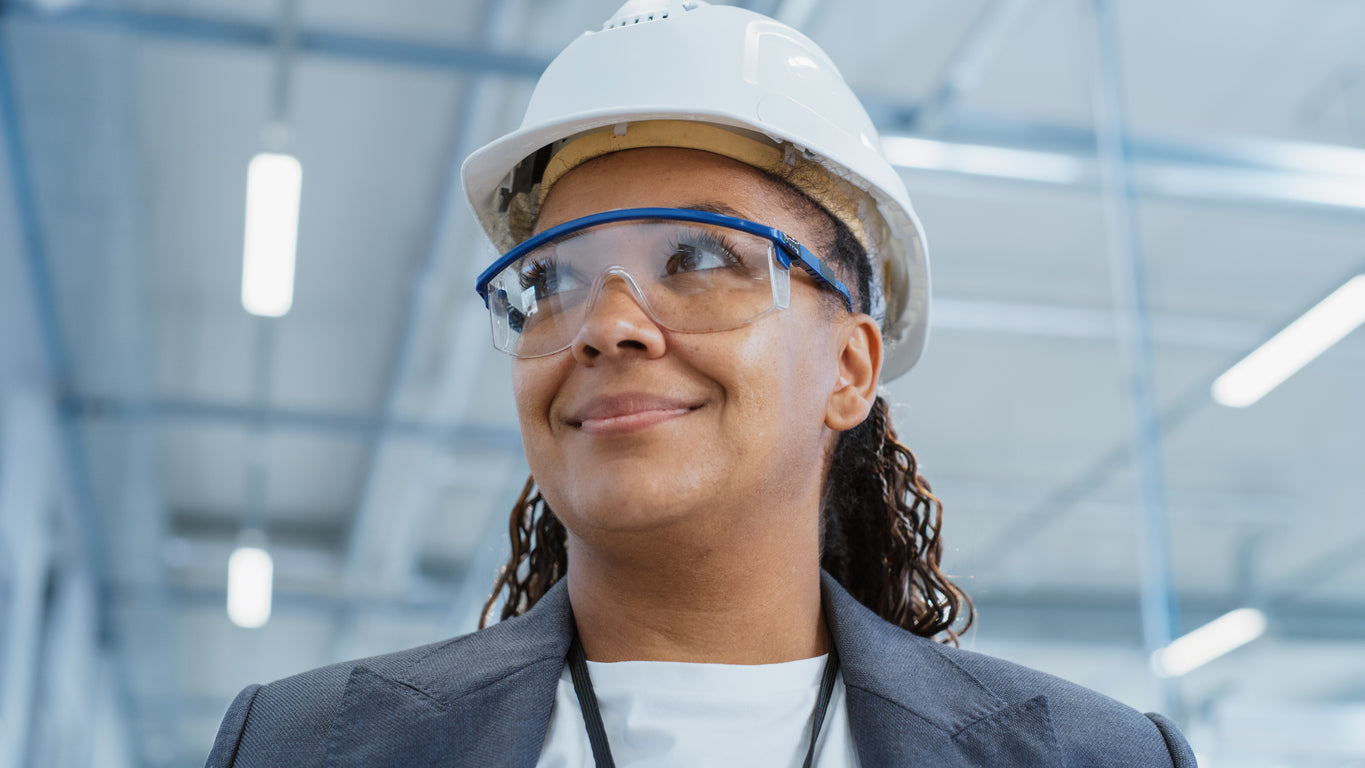Introduction
Eye injuries are a common occupational hazard across various industries, ranging from minor irritations to severe trauma that can result in permanent vision loss. Safety glasses are essential personal protective equipment (PPE) designed to protect workers' eyes from potential hazards in the workplace. Understanding the role of safety glasses in preventing eye injuries is crucial for ensuring the safety and well-being of workers.
I. Types of Workplace Eye Hazards
A. Projectiles and Flying Debris - Workers in construction, manufacturing, and industrial settings may encounter projectiles such as metal fragments, wood chips, or glass shards, which can cause serious eye injuries.
B. Chemicals and Irritants - Chemical splashes, fumes, and airborne particles in laboratories, chemical plants, and healthcare facilities pose a significant risk of eye irritation, burns, or chemical burns.
C. Radiation and UV Exposure - Welding, metalworking, and outdoor work expose workers to harmful radiation, ultraviolet (UV) rays, and intense light sources that can damage the eyes and lead to long-term vision problems.
II. Role of Safety Glasses in Eye Protection
A. Impact Resistance - Safety glasses are constructed from durable materials, such as polycarbonate or Trivex, that provide high impact resistance and protect against flying debris and projectiles.
B. Wraparound Design - Many safety glasses feature a wraparound design with side shields or full coverage frames to provide additional protection from debris, dust, and splashes coming from the sides.
C. Lens Coatings and Tints - Safety glasses may be equipped with lens coatings or tints to enhance visibility, reduce glare, and filter out harmful UV rays or blue light, depending on the specific hazards present in the work environment.
III. Benefits of Safety Glasses for Workers
A. Prevention of Eye Injuries - Safety glasses act as a barrier between the eyes and potential hazards, significantly reducing the risk of eye injuries such as corneal abrasions, lacerations, and chemical burns.
B. Comfort and Wearability - Modern safety glasses are designed for comfort and wearability, with lightweight frames, adjustable nose pads, and flexible temples that provide a secure and comfortable fit for extended wear.
C. Compliance with Safety Regulations - Occupational Safety and Health Administration (OSHA) regulations require employers to provide appropriate eye protection for workers exposed to eye hazards in the workplace, including safety glasses that meet specific performance standards.
IV. Specialized Eye Protection
A. Safety Goggles - Safety goggles offer full eye coverage and a snug seal around the eyes, providing protection against chemical splashes, dust, and airborne particles in high-risk environments.
B. Face Shields - Face shields provide comprehensive protection for the face, including the eyes, nose, and mouth, and are commonly used in conjunction with safety glasses or goggles for added protection against impact and splashes.
V. Training and Education
A. Hazard Awareness and Recognition - Workers should receive comprehensive training on the types of eye hazards present in their workplace and how to recognize potential risks.
B. Proper Use and Maintenance - Training programs should include instruction on the proper use, fitting, and maintenance of safety glasses, as well as guidelines for cleaning and storage to ensure ongoing effectiveness.
VI. Conclusion
Safety glasses are a vital component of workplace safety programs, providing essential protection against eye injuries caused by various occupational hazards. By wearing safety glasses, workers can significantly reduce their risk of eye trauma, discomfort, and long-term vision problems associated with workplace hazards. Employers should prioritize the provision of appropriate eye protection and ensure that workers receive adequate training and education to recognize and mitigate eye hazards effectively.
FAQs
1. Are safety glasses sufficient protection against all types of eye hazards? While safety glasses provide effective protection against most common workplace eye hazards, they may not be suitable for all situations. In environments where workers are exposed to chemical splashes, dust, or fine particles, safety goggles or face shields may offer better protection by providing a tighter seal around the eyes and face.
2. How should safety glasses be cleaned and maintained to ensure their effectiveness? Safety glasses should be cleaned regularly using mild soap and water or a designated eyeglass cleaner to remove dirt, debris, and smudges. Avoid using abrasive cleaners or rough cloths that could scratch the lenses. Inspect safety glasses for signs of damage or wear, such as scratches, cracks, or loose screws, and replace them as needed to maintain their effectiveness.
3. Can prescription eyeglasses be converted into safety glasses? Yes, prescription eyeglasses can be converted into safety glasses by adding impact-resistant lenses and meeting specific safety standards. However, it's essential to consult with an eyewear professional or safety equipment supplier to ensure that the converted glasses provide adequate protection and comply with relevant regulations.
4. Are safety glasses required for all workers, regardless of their job duties? Employers are responsible for assessing workplace hazards and determining the appropriate level of eye protection required for each job task. While safety glasses may be necessary for workers in high-risk environments or those exposed to potential eye hazards, they may not be required for all workers. Employers should conduct hazard assessments and provide eye protection accordingly.
5. What should workers do if they experience an eye injury while wearing safety glasses? If a worker experiences an eye injury while wearing safety glasses, they should seek immediate medical attention to assess the severity of the injury and receive appropriate treatment. Workers should report the incident to their supervisor or safety officer and follow company protocols for reporting workplace injuries.

